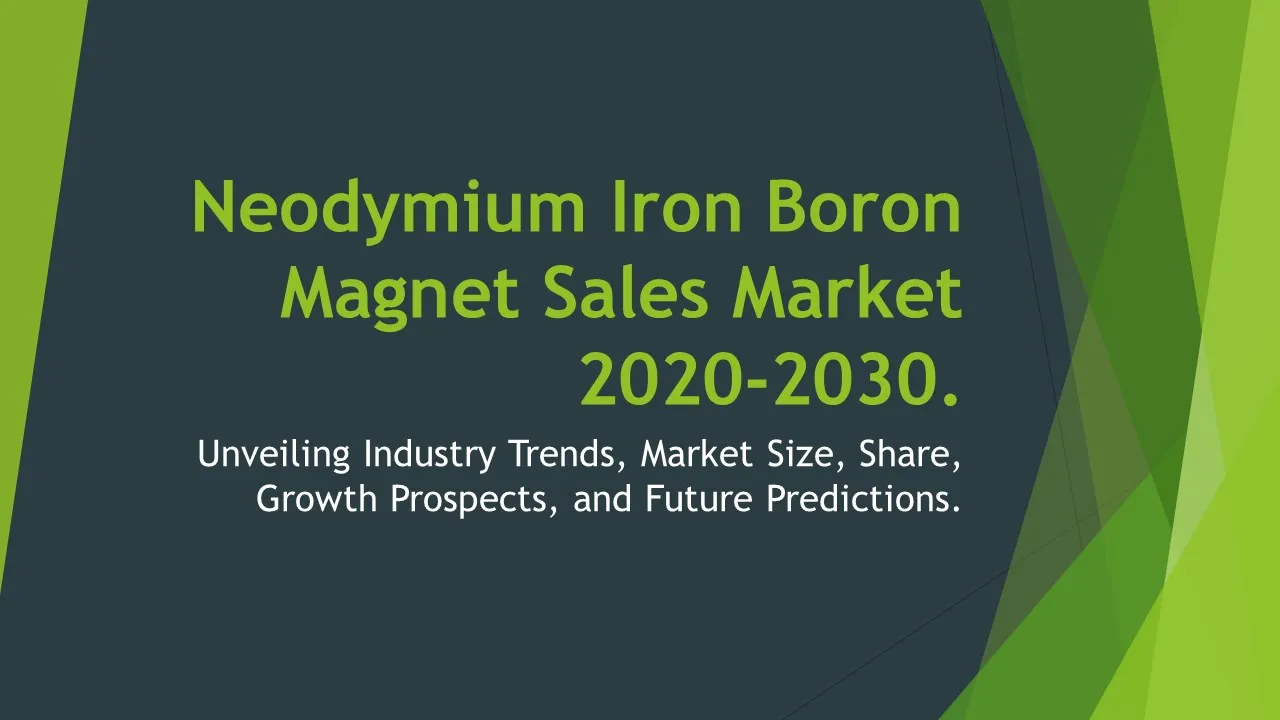EPDM and SBR Granules
EPDM and SBR Granules Market Segments - by Product Type (EPDM Granules, SBR Granules), Application (Sports Surfaces, Playground Surfaces, Running Tracks, Landscaping, and Others), Distribution Channel (Direct Sales, Distributor Sales), End-User (Residential, Commercial, Industrial), and Region (North America, Europe, Asia Pacific, Latin America, Middle East & Africa) - Global Industry Analysis, Growth, Share, Size, Trends, and Forecast 2025-2035
- Report Preview
- Table Of Content
- Segments
- Methodology
EPDM and SBR Granules Market Outlook
The global EPDM and SBR granules market is anticipated to reach a valuation of approximately USD 1.5 billion by the year 2035, growing at a compound annual growth rate (CAGR) of around 5.2% during the forecast period from 2025 to 2035. The increasing demand for high-performance rubber materials, especially in the construction and recreational sectors, significantly drives market growth. Additionally, the rising awareness regarding the safety and environmental benefits of using EPDM and SBR granules in various applications, including sports and playground surfaces, plays a crucial role in this expansion. Another contributing factor is the rapid urbanization and infrastructural development in emerging economies, which has led to heightened requirements for durable flooring solutions, thereby propelling the demand for EPDM and SBR granules. Furthermore, technological advancements in manufacturing processes have enhanced the quality and versatility of these granules, making them more appealing to a wider range of industries.
Growth Factor of the Market
The growth factors propelling the EPDM and SBR granules market are multifaceted, encompassing both macroeconomic and industry-specific influences. Notably, the increasing focus on eco-friendly materials is steering manufacturers toward sourcing sustainable raw materials, thereby enhancing the market's appeal. The versatility of EPDM and SBR granules in various applications, ranging from sports surfaces to industrial flooring, further underscores their importance in the market. Additionally, innovations in production technology are enabling the creation of customized formulations that cater to specific end-user needs, thereby boosting market demand. Moreover, the global trend towards green urban planning and the construction of safe recreational spaces for children contribute significantly to the increasing uptake of these granules. Lastly, the expansion of the construction sector, particularly in developing nations, is expected to create numerous opportunities for growth in the EPDM and SBR granules market.
Key Highlights of the Market
- The EPDM and SBR granules market is projected to reach USD 1.5 billion by 2035.
- North America is expected to hold a significant share of the market, driven by robust infrastructure investments.
- The sports surfaces application segment is anticipated to dominate the market due to increasing sports activities globally.
- Technological advancements in production methods are enhancing the properties of EPDM and SBR granules.
- The demand for environmentally friendly materials is significantly influencing market trends.
By Product Type
EPDM Granules:
EPDM (Ethylene Propylene Diene Monomer) granules are extensively used in various applications due to their excellent weather resistance, UV stability, and durability. The demand for EPDM granules is particularly high in the sports and recreational sectors, where they are applied in the construction of running tracks, playground surfaces, and other outdoor facilities. Their non-toxic nature and ability to withstand extreme temperatures make them an ideal choice for environments that experience varied weather conditions. Furthermore, the ability of EPDM granules to absorb shock and provide a cushioned surface enhances their application in safety-focused areas. As urban development continues to rise, the use of EPDM granules in landscaping and decorative surfaces is also gaining traction, further contributing to market growth.
SBR Granules:
SBR (Styrene-Butadiene Rubber) granules are known for their excellent wear resistance and cost-effectiveness, making them a popular choice in various industrial applications. Unlike EPDM, SBR granules are particularly favored in flooring solutions for commercial and industrial settings due to their mechanical properties and affordability. The ability of SBR to blend well with other materials allows it to be used in mixed formulations, enhancing its versatility in applications ranging from sports surfaces to automotive components. Moreover, the increasing trend of replacing traditional flooring materials with rubberized options is expected to boost the demand for SBR granules. The anticipated growth in the automotive and construction industries is likely to further fuel the uptake of SBR granules in the coming years.
By Application
Sports Surfaces:
The application of EPDM and SBR granules in sports surfaces is one of the most significant market segments, driven by the increasing participation in sports activities worldwide. These granules provide excellent shock absorption, traction, and durability, making them ideal for use in tracks, field surfaces, and gymnasiums. The growing emphasis on creating safe and accessible sports facilities has resulted in heightened investments in sports infrastructure, consequently increasing the demand for specialized flooring materials like EPDM and SBR granules. Additionally, the availability of a variety of colors and textures allows for customization in design, catering to aesthetic preferences in sports facility construction, further enhancing their appeal in this segment.
Playground Surfaces:
The demand for EPDM and SBR granules in playground surfaces is rapidly growing due to increasing safety regulations and parental concerns regarding children's play environments. These granules provide a cushioned surface that minimizes the risk of injuries during falls, making them a preferred material for playground installations. Furthermore, the non-toxic and environmentally friendly properties of EPDM granules make them particularly appealing in residential and commercial playgrounds. The growth in urbanization and the subsequent rise in public parks and playgrounds contribute significantly to the demand for robust and safe surface materials, which is expected to drive market growth in this application segment.
Running Tracks:
Running tracks represent a major application area for EPDM and SBR granules, primarily in sports complexes and educational institutions. The unique properties of these granules, such as excellent grip, durability, and shock absorption, enable the construction of high-performance running tracks that can withstand heavy usage and varying climatic conditions. The increasing emphasis on fitness and sports training has led to a growing number of running tracks being constructed, which, in turn, boosts the demand for EPDM and SBR granules. Additionally, the trend towards hosting athletic events and competitions is also leading to increased investments in developing quality sports facilities, further elevating the need for specialized flooring materials.
Landscaping:
The use of EPDM and SBR granules in landscaping is gaining prominence due to their aesthetic versatility and durability. These granules are increasingly utilized in outdoor applications, such as garden paths, decorative features, and playground surfaces, providing an attractive yet functional alternative to traditional landscaping materials. The eco-friendly nature of EPDM granules, alongside their ability to absorb rainwater and reduce runoff, makes them an attractive option for sustainable landscaping practices. As environmental consciousness grows, the demand for EPDM granules in landscaping applications is expected to rise, propelling overall market growth.
Others:
In addition to the primary applications outlined above, EPDM and SBR granules are utilized in several other sectors, including automotive, marine, and industrial applications. Their excellent mechanical properties make them suitable for a variety of uses, from sound insulation in vehicles to protective coatings for marine equipment. The growing automotive industry, particularly in emerging markets, is likely to drive up the demand for these granules in manufacturing processes. Additionally, as industries continue to seek innovative materials for improving product performance and reducing lifecycle costs, the versatility of EPDM and SBR granules positions them well for expansion into new applications.
By Distribution Channel
Direct Sales:
Direct sales channels play a significant role in the distribution of EPDM and SBR granules, allowing manufacturers to establish direct relationships with their customers. This approach facilitates better communication and understanding of customer needs, which can lead to tailored products and services. The direct sales model is particularly beneficial for large orders, common in commercial and industrial applications, where clients require specific formulations for their projects. Furthermore, direct sales enable manufacturers to maintain control over pricing strategies and quality assurance, enhancing customer satisfaction and loyalty in the long run.
Distributor Sales:
Distributor sales channels are equally important in the EPDM and SBR granules market, providing an essential link between manufacturers and end-users. Distributors facilitate a broader reach, enabling manufacturers to access diverse markets and customer segments. They often provide additional services, such as inventory management, marketing support, and logistics, which can significantly benefit manufacturers looking to streamline their operations. Furthermore, distributors often have established relationships with various sectors, such as construction and sports, allowing them to effectively promote and sell EPDM and SBR granules to a broader clientele. The reliance on distributor networks is particularly prominent in regions where manufacturers may not have a direct presence, ensuring consistent market penetration.
By User
Residential:
In the residential sector, the demand for EPDM and SBR granules is primarily driven by the increasing focus on creating safe outdoor play areas for children. Homeowners are increasingly investing in playground surfaces made from these granules due to their non-toxic properties and shock-absorbing capabilities. Additionally, EPDM and SBR granules are utilized in landscaping projects, offering homeowners a durable and visually appealing alternative for garden paths and decorative features. The trend towards building eco-friendly homes is also influencing the uptake of EPDM granules, as environmentally conscious consumers seek sustainable materials for their residential projects.
Commercial:
The commercial user segment is a significant driver of the EPDM and SBR granules market, particularly in applications related to sports facilities and public playgrounds. Businesses are increasingly opting for rubberized surfaces to enhance the safety and aesthetic appeal of their properties. The investment in recreational spaces, such as parks and playgrounds, is seeing a rise due to government initiatives to promote healthy lifestyles among communities. Moreover, the durability and low maintenance requirements of EPDM and SBR granules make them an attractive choice for commercial users, ensuring long-term cost benefits. As urban development continues to expand, the commercial sector is expected to remain a key contributor to market growth.
Industrial:
In the industrial sector, EPDM and SBR granules are gaining traction due to their versatility and durability, finding applications in various manufacturing processes. Industries such as automotive, construction, and flooring are increasingly adopting these rubber granules for their excellent mechanical properties and cost-effectiveness. The push for sustainable manufacturing practices is also driving the need for high-performance materials that can withstand rigorous use while minimizing environmental impact. Furthermore, the growing trend of incorporating recycled materials into production processes enhances the market appeal of EPDM and SBR granules, positioning them as a preferred choice among industrial users.
By Region
The global EPDM and SBR granules market exhibits a diverse regional landscape, with North America and Europe being the leading markets due to their advanced infrastructure and high demand for recreational facilities. North America is expected to hold the largest market share, with projections indicating a CAGR of approximately 5.5% over the forecast period. The region's robust investment in sports and playground infrastructure, combined with growing health awareness, contributes significantly to the rising demand for EPDM and SBR granules. Additionally, the presence of key manufacturers and distributors in North America strengthens the market's growth prospects.
Europe follows closely, with a steady demand for EPDM and SBR granules driven by safety regulations and the increasing adoption of eco-friendly materials in construction and landscaping. The Asia Pacific region is also emerging as a key player in the market, expected to witness significant growth due to rapid urbanization and infrastructural developments in countries like China and India. The region's CAGR is anticipated to be around 6%, reflecting the growing investments in recreational facilities and safety-focused surfaces. Latin America and the Middle East & Africa are expected to capture smaller market shares but show potential for growth, especially as urban development continues to rise in these regions.
Opportunities
The opportunities in the EPDM and SBR granules market are burgeoning, particularly due to the growing trend of urbanization and infrastructural development across the globe. With more cities and communities emphasizing safe recreational spaces, there is an increasing demand for durable and safe surfaces that provide cushioning and protection for users. Innovations in product design and formulation are also creating opportunities for manufacturers to introduce enhanced granules that cater to specific needs, such as improved UV resistance or color stability. Additionally, the rise of eco-conscious consumers is pushing the market toward sustainable practices, creating a pathway for the adoption of recycled materials in granule production. This not only presents an opportunity for differentiation but also aligns with the global push towards sustainability, allowing companies to position themselves favorably in the market.
Moreover, the increasing awareness of health and fitness is driving the construction of sports facilities and playgrounds, further propelling the demand for EPDM and SBR granules. This trend is particularly evident in regions where governments are investing heavily in public health initiatives, encouraging outdoor activity among citizens. The opportunity for partnerships and collaborations with construction firms, sports organizations, and educational institutions presents a lucrative avenue for growth. By focusing on product innovation and responding to market trends, companies in the EPDM and SBR granules market can capitalize on these opportunities to strengthen their market presence and profitability.
Threats
Despite the significant growth prospects, the EPDM and SBR granules market faces several threats that could hinder its progress. One of the primary threats is the volatility in raw material prices, particularly for petroleum-based products, which could impact production costs and, subsequently, market pricing. Furthermore, the increasing focus on regulatory compliance and environmental standards presents challenges for manufacturers, as the need to adhere to stringent guidelines can increase operational costs. Additionally, competition from alternative materials, such as thermoplastic elastomers and polyurethane, is on the rise, making it essential for EPDM and SBR granules to demonstrate superior performance to maintain their market share. The threat of economic downturns and reduced investments in infrastructure development could also pose risks to market growth.
Another potential threat is the slow adoption of new technologies and manufacturing processes that could enhance the properties of EPDM and SBR granules. Companies that do not engage in continuous research and development may find themselves outpaced by competitors who can offer more innovative and effective products. Additionally, the potential for supply chain disruptions due to geopolitical tensions or pandemic-related challenges can threaten the availability of essential materials. As the market evolves, manufacturers must remain vigilant and adaptable to mitigate these threats while continuing to capitalize on growth opportunities.
Competitor Outlook
- Continental AG
- Dynasol Group
- Kraton Corporation
- Goodyear Tire & Rubber Company
- Univar Solutions
- Elastomer Technologies
- Omni International
- American Recycling
- Vardhman Group
- Hexpol AB
- Ravago Group
- JSR Corporation
- The DOW Chemical Company
- LANXESS AG
- TSRC Corporation
The competitive landscape of the EPDM and SBR granules market is characterized by the presence of numerous established companies and new entrants striving to gain market share through innovation and quality offerings. Major players focus on diversifying their product portfolios and enhancing their manufacturing capabilities to meet the evolving demands of end-users. The competition is not only driven by product quality but also by pricing strategies, customer service, and the ability to provide custom solutions. Companies are increasingly investing in research and development to create enhanced formulations that offer improved performance, particularly in safety and durability aspects, to remain competitive in the market.
Continental AG, for instance, has made significant strides in expanding its product offerings, focusing on high-performance EPDM granules for various applications. Their commitment to sustainability and eco-friendly practices has positioned them favorably in the market. Similarly, Goodyear Tire & Rubber Company leverages its expertise in rubber production to offer a wide range of EPDM and SBR granules, catering to both residential and commercial sectors. Innovations in formulations and applications, along with a strong focus on operational efficiency, have allowed these companies to maintain a competitive edge. Moreover, collaborations with key industry stakeholders and investments in marketing channels contribute to their overall market presence.
Furthermore, companies such as Kraton Corporation and Dynasol Group are also making notable contributions to the market by focusing on developing advanced rubber materials that align with current trends in safety and environmental sustainability. They are actively engaging with customers to understand their needs and providing tailored solutions, which enhances customer loyalty and satisfaction. The role of distributors in this landscape is crucial, as they bridge the gap between manufacturers and end-users, ensuring that products reach the market effectively. The ongoing competition for innovation, quality, and customer engagement will continue to shape the competitive dynamics of the EPDM and SBR granules market in the years to come.
1 Appendix
- 1.1 List of Tables
- 1.2 List of Figures
2 Introduction
- 2.1 Market Definition
- 2.2 Scope of the Report
- 2.3 Study Assumptions
- 2.4 Base Currency & Forecast Periods
3 Market Dynamics
- 3.1 Market Growth Factors
- 3.2 Economic & Global Events
- 3.3 Innovation Trends
- 3.4 Supply Chain Analysis
4 Consumer Behavior
- 4.1 Market Trends
- 4.2 Pricing Analysis
- 4.3 Buyer Insights
5 Key Player Profiles
- 5.1 Hexpol AB
- 5.1.1 Business Overview
- 5.1.2 Products & Services
- 5.1.3 Financials
- 5.1.4 Recent Developments
- 5.1.5 SWOT Analysis
- 5.2 LANXESS AG
- 5.2.1 Business Overview
- 5.2.2 Products & Services
- 5.2.3 Financials
- 5.2.4 Recent Developments
- 5.2.5 SWOT Analysis
- 5.3 Ravago Group
- 5.3.1 Business Overview
- 5.3.2 Products & Services
- 5.3.3 Financials
- 5.3.4 Recent Developments
- 5.3.5 SWOT Analysis
- 5.4 Dynasol Group
- 5.4.1 Business Overview
- 5.4.2 Products & Services
- 5.4.3 Financials
- 5.4.4 Recent Developments
- 5.4.5 SWOT Analysis
- 5.5 Continental AG
- 5.5.1 Business Overview
- 5.5.2 Products & Services
- 5.5.3 Financials
- 5.5.4 Recent Developments
- 5.5.5 SWOT Analysis
- 5.6 Vardhman Group
- 5.6.1 Business Overview
- 5.6.2 Products & Services
- 5.6.3 Financials
- 5.6.4 Recent Developments
- 5.6.5 SWOT Analysis
- 5.7 JSR Corporation
- 5.7.1 Business Overview
- 5.7.2 Products & Services
- 5.7.3 Financials
- 5.7.4 Recent Developments
- 5.7.5 SWOT Analysis
- 5.8 TSRC Corporation
- 5.8.1 Business Overview
- 5.8.2 Products & Services
- 5.8.3 Financials
- 5.8.4 Recent Developments
- 5.8.5 SWOT Analysis
- 5.9 Univar Solutions
- 5.9.1 Business Overview
- 5.9.2 Products & Services
- 5.9.3 Financials
- 5.9.4 Recent Developments
- 5.9.5 SWOT Analysis
- 5.10 American Recycling
- 5.10.1 Business Overview
- 5.10.2 Products & Services
- 5.10.3 Financials
- 5.10.4 Recent Developments
- 5.10.5 SWOT Analysis
- 5.11 Kraton Corporation
- 5.11.1 Business Overview
- 5.11.2 Products & Services
- 5.11.3 Financials
- 5.11.4 Recent Developments
- 5.11.5 SWOT Analysis
- 5.12 Omni International
- 5.12.1 Business Overview
- 5.12.2 Products & Services
- 5.12.3 Financials
- 5.12.4 Recent Developments
- 5.12.5 SWOT Analysis
- 5.13 Elastomer Technologies
- 5.13.1 Business Overview
- 5.13.2 Products & Services
- 5.13.3 Financials
- 5.13.4 Recent Developments
- 5.13.5 SWOT Analysis
- 5.14 The DOW Chemical Company
- 5.14.1 Business Overview
- 5.14.2 Products & Services
- 5.14.3 Financials
- 5.14.4 Recent Developments
- 5.14.5 SWOT Analysis
- 5.15 Goodyear Tire & Rubber Company
- 5.15.1 Business Overview
- 5.15.2 Products & Services
- 5.15.3 Financials
- 5.15.4 Recent Developments
- 5.15.5 SWOT Analysis
- 5.1 Hexpol AB
6 Market Segmentation
- 6.1 EPDM and SBR Granules Market, By User
- 6.1.1 Residential
- 6.1.2 Commercial
- 6.1.3 Industrial
- 6.2 EPDM and SBR Granules Market, By Application
- 6.2.1 Sports Surfaces
- 6.2.2 Playground Surfaces
- 6.2.3 Running Tracks
- 6.2.4 Landscaping
- 6.2.5 Others
- 6.3 EPDM and SBR Granules Market, By Distribution Channel
- 6.3.1 Direct Sales
- 6.3.2 Distributor Sales
- 6.1 EPDM and SBR Granules Market, By User
7 Competitive Analysis
- 7.1 Key Player Comparison
- 7.2 Market Share Analysis
- 7.3 Investment Trends
- 7.4 SWOT Analysis
8 Research Methodology
- 8.1 Analysis Design
- 8.2 Research Phases
- 8.3 Study Timeline
9 Future Market Outlook
- 9.1 Growth Forecast
- 9.2 Market Evolution
10 Geographical Overview
- 10.1 Europe - Market Analysis
- 10.1.1 By Country
- 10.1.1.1 UK
- 10.1.1.2 France
- 10.1.1.3 Germany
- 10.1.1.4 Spain
- 10.1.1.5 Italy
- 10.1.1 By Country
- 10.2 Asia Pacific - Market Analysis
- 10.2.1 By Country
- 10.2.1.1 India
- 10.2.1.2 China
- 10.2.1.3 Japan
- 10.2.1.4 South Korea
- 10.2.1 By Country
- 10.3 Latin America - Market Analysis
- 10.3.1 By Country
- 10.3.1.1 Brazil
- 10.3.1.2 Argentina
- 10.3.1.3 Mexico
- 10.3.1 By Country
- 10.4 North America - Market Analysis
- 10.4.1 By Country
- 10.4.1.1 USA
- 10.4.1.2 Canada
- 10.4.1 By Country
- 10.5 EPDM and SBR Granules Market by Region
- 10.6 Middle East & Africa - Market Analysis
- 10.6.1 By Country
- 10.6.1.1 Middle East
- 10.6.1.2 Africa
- 10.6.1 By Country
- 10.1 Europe - Market Analysis
11 Global Economic Factors
- 11.1 Inflation Impact
- 11.2 Trade Policies
12 Technology & Innovation
- 12.1 Emerging Technologies
- 12.2 AI & Digital Trends
- 12.3 Patent Research
13 Investment & Market Growth
- 13.1 Funding Trends
- 13.2 Future Market Projections
14 Market Overview & Key Insights
- 14.1 Executive Summary
- 14.2 Key Trends
- 14.3 Market Challenges
- 14.4 Regulatory Landscape
Segments Analyzed in the Report
The global EPDM and SBR Granules market is categorized based on
By Application
- Sports Surfaces
- Playground Surfaces
- Running Tracks
- Landscaping
- Others
By Distribution Channel
- Direct Sales
- Distributor Sales
By User
- Residential
- Commercial
- Industrial
By Region
- North America
- Europe
- Asia Pacific
- Latin America
- Middle East & Africa
Key Players
- Continental AG
- Dynasol Group
- Kraton Corporation
- Goodyear Tire & Rubber Company
- Univar Solutions
- Elastomer Technologies
- Omni International
- American Recycling
- Vardhman Group
- Hexpol AB
- Ravago Group
- JSR Corporation
- The DOW Chemical Company
- LANXESS AG
- TSRC Corporation
- Publish Date : Jan 20 ,2025
- Report ID : CH-10925
- No. Of Pages : 100
- Format : |
- Ratings : 4.5 (110 Reviews)
Related reports









